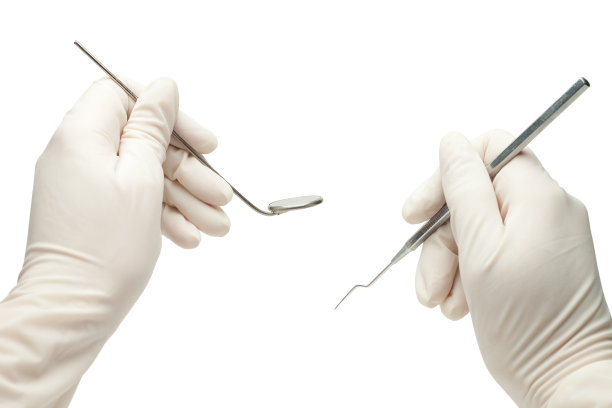Understanding the Procedure and Aftercare Involved in Extracting a Tooth for Optimal Oral Health and Recovery
Summary: Extracting a tooth can be a necessary procedure to maintain optimal oral health, whether due to decay, crowding, or other dental issues. This article delves into a comprehensive understanding of the tooth extraction process, covering the procedure itself, the types of extractions, post-operative care, and potential complications. By exploring these facets in detail, readers will gain essential insights into ensuring a smoother recovery and a healthier mouth following tooth removal. Proper knowledge and adherence to aftercare guidelines can significantly enhance recovery outcomes and prevent future dental issues. Ultimately, this article serves as a valuable resource for patients preparing for a tooth extraction.
1. Understanding the Tooth Extraction Procedure

The tooth extraction process usually begins with an initial examination where the dentist assesses the tooth and surrounding tissue using X-rays. This critical step allows the dentist to determine the tooth’s root shape and position, which is essential for a successful extraction. Once evaluated, the dentist prepares for the procedure by discussing sedation options to ensure patient comfort during the procedure.
During the extraction, local or general anesthesia is administered to numb the area surrounding the tooth. For simple extractions, the dentist gently loosens the tooth using specialized instruments before removing it. In cases that require surgical extraction, such as impacted wisdom teeth, additional techniques might be necessary, including incisions in the gum tissue to access the tooth.
After the extraction, the dentist will place gauze over the extraction site to control bleeding and provide initial support for the blood clot formation. Proper technique and care during this stage are essential to ensure minimal trauma to surrounding tissues, paving the way for a smooth healing process.
2. Types of Tooth Extractions and Their Implications
Tooth extractions are mainly categorized into two types: simple and surgical. A simple extraction usually involves teeth that are visible above the gum line and can be removed easily. This type of extraction generally has a shorter recovery period and fewer complications. However, it still requires careful postoperative care to ensure optimal healing.
Surgical extractions come into play when dealing with more complex situations, such as impacted teeth or roots that are still submerged in bone. This procedure often involves incisions and sometimes the removal of bone surrounding the tooth. Given the complexity, the recovery time may be longer, and close attention to aftercare is crucial for preventing infection and ensuring proper healing.
Understanding the type of extraction required can help patients prepare mentally and physically for the procedure. It is also vital to discuss any concerns with the dentist before the extraction, as this can lead to a more tailored and comfortable experience for the patient.
3. Essential Aftercare Guidelines for Recovery
After a tooth extraction, following proper aftercare guidelines is key to fostering healing and avoiding complications. Initially, patients are advised to bite down gently on the gauze pad for 30 to 45 minutes to curb bleeding. If bleeding continues, replacing the gauze can help manage the situation, and patients should avoid spitting forcefully, which can dislodge the blood clot.
Diet plays an important role during recovery. It is advisable to consume soft foods and avoid hot, spicy, or crunchy items. Ice cream, yogurt, and soups are excellent choices to provide nutrition without irritating the extraction site. Staying hydrated while avoiding straws is also essential, as sucking can adversely affect the healing process.
In addition to dietary restrictions, managing pain and swelling is crucial. Over-the-counter pain relievers or prescribed medications can help alleviate discomfort. Applying a cold pack externally for the first 24 hours may help reduce swelling. Keeping the head elevated while resting can further ease pain and prevent excessive bleeding.
4. Potential Complications and When to Seek Help
While most tooth extractions heal without incident, it is essential to be aware of potential complications. One common issue is dry socket, which occurs when the blood clot dislodges before healing fully, resulting in intense pain and delayed recovery. Symptoms may include a foul taste in the mouth and visible bone in the socket.
Another potential complication is infection at the extraction site. Signs of infection can include fever, excessive swelling, or discharge from the socket. If any of these symptoms arise, it is vital to contact the dentist promptly for evaluation and treatment.
Understanding these potential issues can empower patients to monitor their recovery effectively and seek assistance when necessary. Proactive care and communication with dental professionals can significantly contribute to a positive recovery experience.
Summary: The article addresses the comprehensive aspects of tooth extraction, including the procedure itself, types of extractions, vital aftercare steps, and potential complications. By understanding these factors, patients can enhance their recovery while ensuring better oral health. Education on the extraction process empowers individuals to take confident, informed steps toward maintaining their dental well-being.
This article is compiled by Vickong Dental and the content is for reference only.



